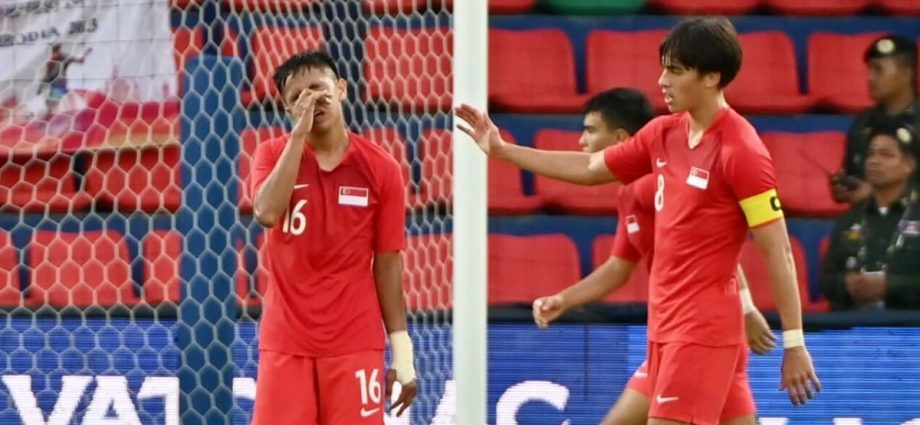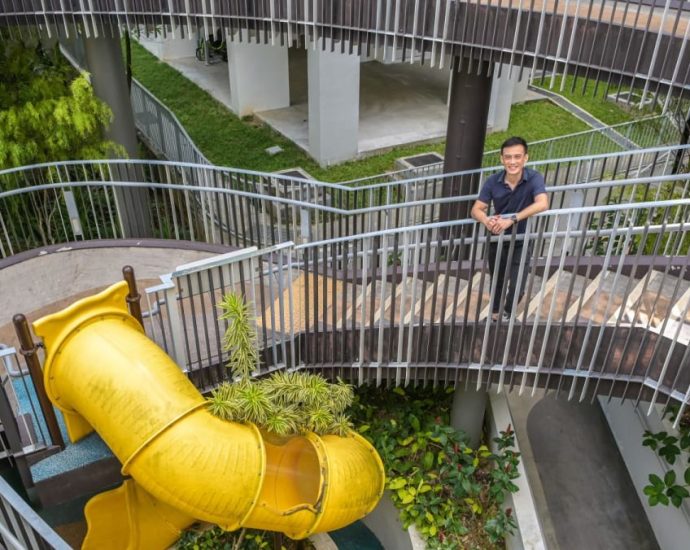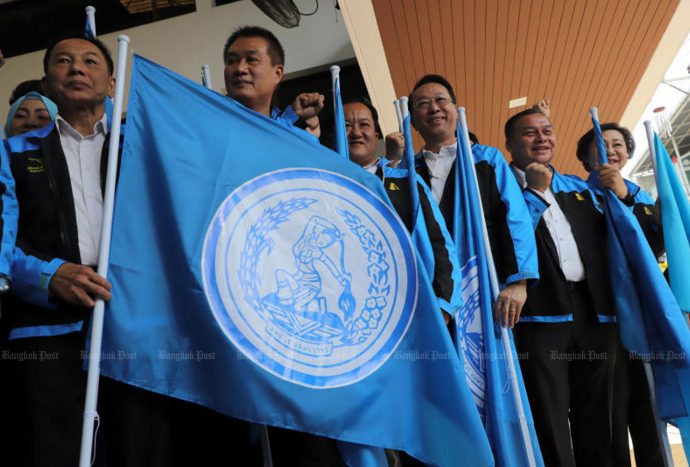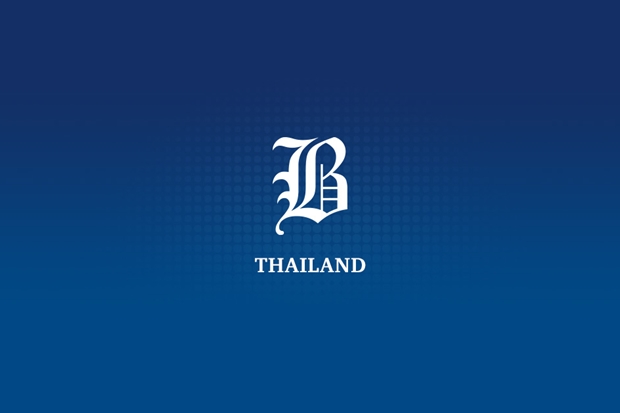Heart of the Matter: FAS to leave âno stone unturnedâ after Singapore football squad review

SINGAPORE: When the Young Lions came off the field after a 7-0 drubbing by Malaysia, the brickbats came fast and furious. For seasoned sports journalist Philip Goh, that result summed up the growing chasm of football standards between both countries.
“We’ve been losing at the age group competitions for quite a while now. Every single age group competition that we go to, we seem to come back with very adverse results.
“(The Malaysians) are continuing to progress, but we’ve been regressing,” said Mr Goh, on the latest episode of the Heart of the Matter podcast.
Mr Bernard Tan, acting president of the Football Association of Singapore (FAS), who was also a guest on the show, did not refute Mr Goh’s observation. He agreed that the younger age groups have not been doing well in tournaments and the key is to find out why.
On the SEA Games loss, he told host Steven Chia: “Never in our wildest dreams (did we think) we would lose 7-0 … some of them can’t really explain what went wrong on the field … the technical team (needs time) to really ask ourselves, what really went wrong?”
From sky terraces to sea views: What goes into designing HDB blocks
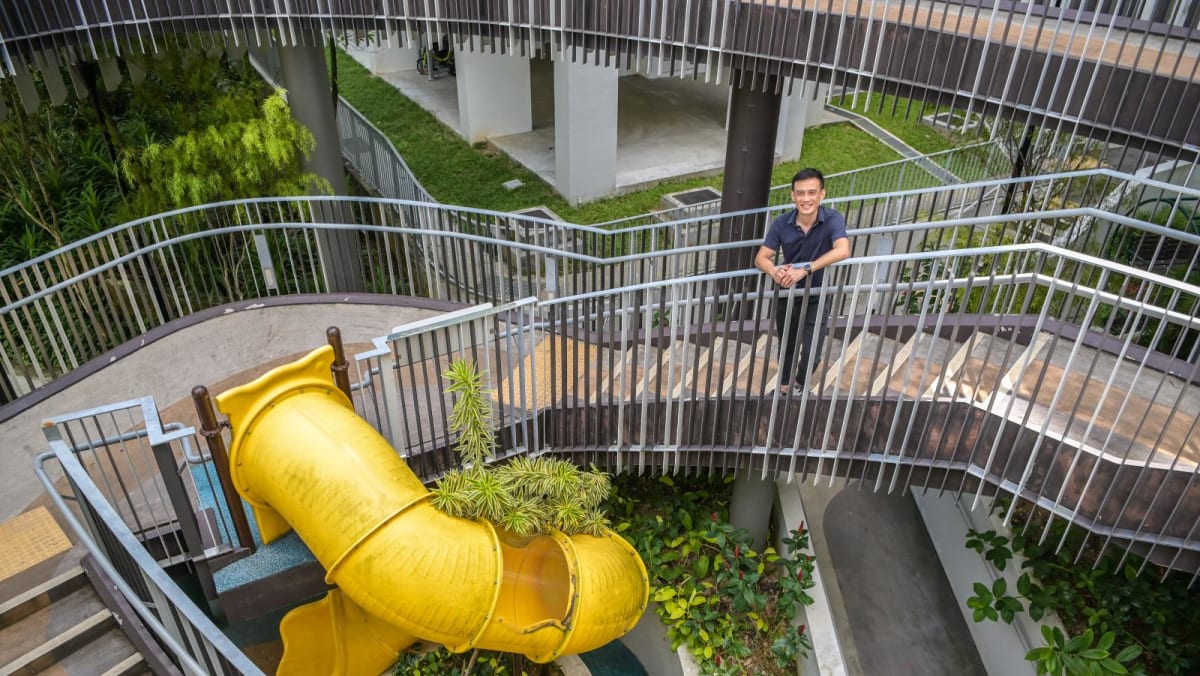
Precast technology is where the building components are manufactured off-site, and then delivered and assembled on-site. To maximise the use of casting moulds for greater cost-effectiveness, each mould is typically used at least 100 times for HDB BTO developments.
To allow more flexibility in design, HDB has developed a Smart Base Mould for precast facades, which comes with adjustable sides and attachments that can be added.
Based on this Smart Base Mould, the Eastlink team designed a mould with moveable parts, said Mr Leong. This helped the architects achieve a “sense of movement” in an otherwise “rigid” facade.
BUILDING REQUIREMENTS, DESIGNING GUIDELINES
For each project, HDB provides architecture teams with specifications such as the number of homes to be built and the type and quantity of flat types. Facilities required are also listed; this can include playgrounds, fitness corners, pavilions and commercial spaces.
The design brief also covers the building form and layout, pedestrian and vehicular connectivity, layouts for various flat types and regulatory and technical requirements.
These requirements help architects shorten their design time as they do not have to create their own layouts from scratch, said HDB.
“The consistency of flat layouts also allows for standardisation of structural, architectural as well as mechanical and electrical components, which in turn helps to enhance the efficiency and speed of construction.”
Regulations are also in place to ensure homes are more sustainable than before. For example, all new public housing projects since 2014 have to provide centralised chutes for recyclable waste, regenerative lifts and energy-saving light fittings in common areas.
Other guidelines the architects have to take into account include keeping the design consistent with HDB’s vision for the town. The theme and identity of the town percolate through the housing projects, influencing the colour palette, designs of playgrounds, fitness corners and signs.
Commentary: We shouldnât need to designate MRT priority seats
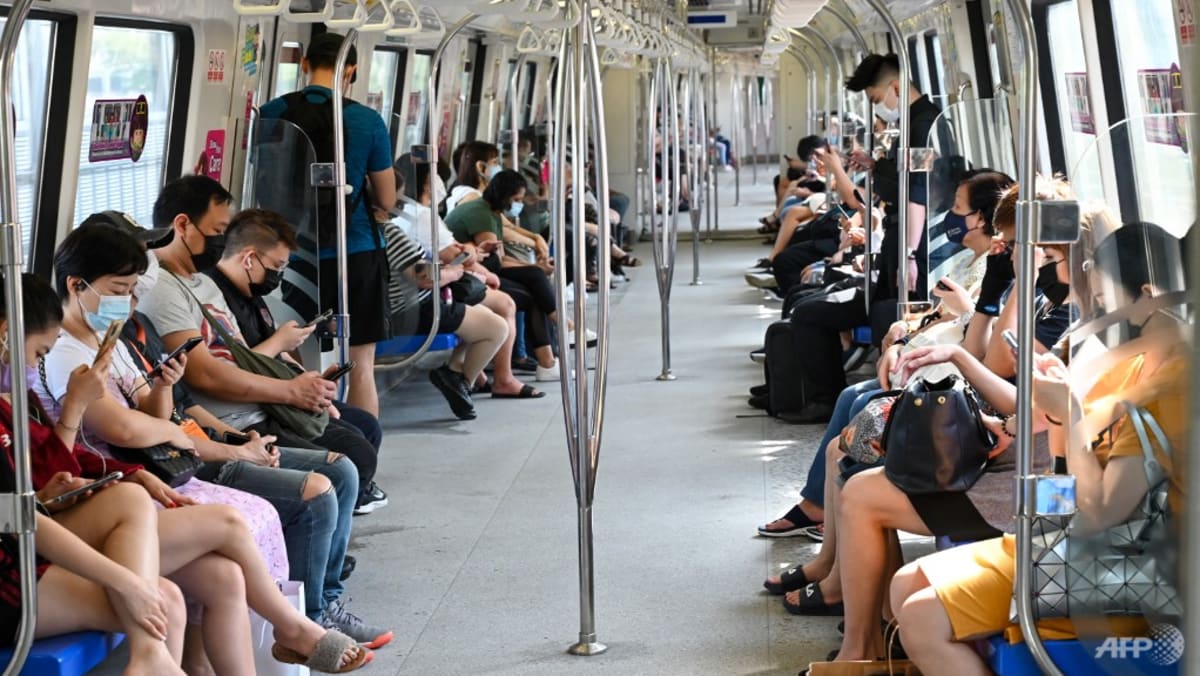
SINGAPORE: With her Minion-like physique, snazzy purple outfit, round cherry-red spectacles, jaunty flower in her hair and a smile on her face, most of us would have met Stacey – or as she’s more commonly known, Stand-Up Stacey.
The Land Transport Authority (LTA) cartoon mascot is a common sight in MRT carriages, on huge stickers right behind the priority seats that read: “Show you care. Offer this seat”. Yet, poor Stand-Up Stacey and commuters recently had the misfortune to witness two men verbally abuse each other, ostensibly over priority seats.
A video circulating on social media showed an older man berating a younger man seated in the priority seat, using phrases such as “you not Singaporean” and “stupid guy”. The younger man responded with a volley of insults, pointing out that giving up his seat is “not in the Constitution. It’s not the law”.
Have priority seats, intended to nudge the best in us, somehow brought out the worst in us?
Netizens had plenty to say about this incident – on both sides. Some advocated showing graciousness by offering seats to older people without waiting to be asked, especially as priority seats are designated near the doors for convenience. Others pointed out that young commuters also paid their fare and could be tired from working the whole day.
A few took issue with the needlessly aggressive tone of both parties. One even made ableist comments about not taking public transport if one cannot stand, completely missing the point that a well-designed public transport system is supposed to be affordable, accessible and inclusive.
CNA Explains: Chinaâs soft panda power in a time of hardening geopolitical tensions
But is this changing along with perceptions of China on the global stage, as well as what could be characterised as roiling ties with several countries in the West and beyond? “In the past, it seemed that China was wanting to seek or strengthen favourable relations with other nations,” saidContinue Reading
Cannabis-flavoured gummies, âCBDâ massages in Thailand: Why Singaporean visitors must beware
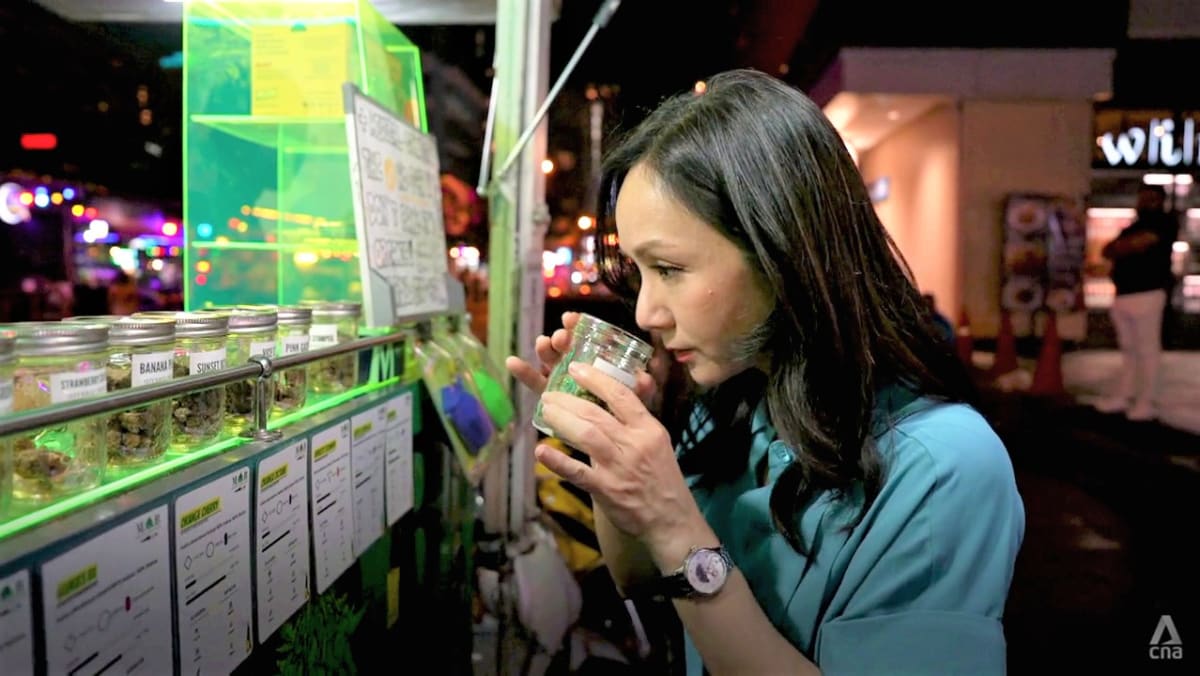
“No one, absolutely no one, is batting an eyelid,” programme host Diana Ser remarked as she walked down a street in Sukhumvit district filled with mobile trucks selling cannabis and related products.
And from the English-language signs and menus in some shops as well as the English-speaking staff, one surmises that “tourists are definitely one of the target audiences”, said Saksith.
Four Twenty Dispensary, for instance, gets Singaporean customers “quite frequently”, said its senior operations manager, Mark Nakayama. “They ask for (cannabis) flowers, but then they also come for edibles and some sort of accessories.”
Kiew Kai Ka restaurant, which uses fresh and dried cannabis leaves in its food, also sees Singaporean patrons, said manager Mike Nuttapong. “They’re curious about how it tastes and maybe the side effects … when they consume our dishes.”
Dems deny coalition rumours

No talks on setting up rival bloc
The Democrat Party on Saturday denied rumours that it was in talks with another party to form a rival coalition that excludes the Move Forward Party (MFP) and the United Thai Nation Party (UTN).
Ramet Rattanachaweng, acting Democrat spokesman, said no Democrats have taken part in any plan to set up a rival coalition and such rumours tarnished the party’s reputation.
Meanwhile, Mr Ramet said the party would not get involved in a dispute over the role of the House Speaker following tensions between the MFP and the Pheu Thai Party over who should get the post. It is the prospective coalition’s business to thrash out the issue, he said.
He said the House Speaker, who is the Parliament President by default, is required by the charter and parliament regulations to be impartial when carrying out his duty.
He said Democrat patriarch Chuan Leekpai did a perfect job and maintained impartiality when he was called to exercise judgements in parliament. He said he believed the prospective coalition partners could find a qualified person for the post.
He rejected reports that the Democrats and Pheu Thai would make a deal on who should be House Speaker.
Mr Ramet defended Mr Chuan over the latter’s decision not to include a bill seeking to amend Section 112 on the House agenda during the last parliament, saying the proposed law was unconstitutional.
“It’s not right to say he didn’t support a public-sponsored bill. Several proposals initiated by the people were examined and passed into laws. A proposed constitutional amendment proposed by the people was also accepted for consideration,” he said.
The spokesman also said the party, which won 25 seats in the general election, would not support any MFP-led bid to revise Section 112 although the matter is not part of the agreement reached by the eight prospective partners. He said Democrats have gathered information about the amendment proposal sponsored by the MFP and are gravely concerned on several points.
Earlier, former massage parlour tycoon Chuvit Kamolvisit said two parties were working out a plan in case the MFP’s bid to set up the coalition government failed.
He also said the current government bloc led by Prime Minister Prayut Chan-o-cha and Deputy Prime Minister Prawit Wongsuwon were not giving up their plan to stay in power.
Russian man drowns off Patong
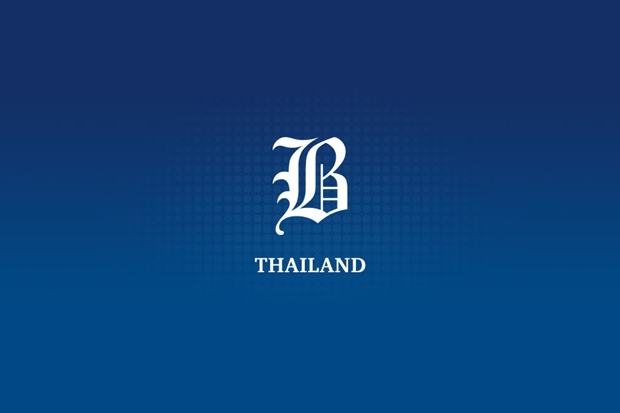
PHUKET: A Russian man drowned while swimming off Patong beach yesterday.
Pol Maj Chaiyakorn Tangsakul, an investigator at Patong police station, said the incident was reported at 7.55am.
Rescue workers, lifeguards and personnel from Patong Hospital attended. Despite the medics’ efforts to perform cardiopulmonary resuscitation on the tourist, their attempts were unsuccessful.
The tourist’s wife told the police she and her husband Pavel Rafaylovich, 53, were Russian nationals. They were staying at a hotel near the beach and had decided to go for a swim on Saturday morning. Her husband had swum about 7 kilometres from shore amid strong waves when he started having problems. She called out for help and lifeguards rushed into the sea to bring him back to shore. However, the man could not be resuscitated and died.
Thailand celebrates its sixth Unesco listing

A national collection of palm-leaf manuscripts that Thailand nominated for the United Nations Educational, Scientific and Cultural Organisation’s (Unesco) global list has won recognition as an entry among 64 newly included international inscriptions, the government said on Saturday.
Thailand nominated the National Collection of Palm-Leaf Manuscripts of the Phra That Phanom Chronicle, which narrates the tale of the Buddha’s breastbones that were brought from India for enshrinement at Phrathat Phanom — widely recognised as a sacred Buddhist centre in the Mekong region.
Government spokesman, Anucha Burapachaisri, said the nominated inscription, Lilit Nanthopananthasut Kham Luang, a Buddhist work penned in 1736 by Prince Narathibet of the kingdom of Ayutthaya, did not receive approval from Unesco’s International Advisory Committee (IAC) to be included among this year’s new items of documentary heritage on the Memory of the World.
“Thailand has sought an explanation as to why this inscription didn’t win the selection so we can improve our documentation and nominate it again next time,” Mr Anucha said.
The National Collection of Palm-Leaf Manuscripts of Phra That Phanom Chronicle has secured its place as Thailand’s sixth Unesco-listed documentary heritage item, adding to the country’s growing collection of recognised treasures.
“Prime Minister Prayut Chan-o-cha has welcomed Unesco’s approval of the nomination of this inscription, which was inscribed on palm leaves in Isan, Thai and Pali script and composed using an indigenous ancient language,” he said. “The work also reflects the Buddhist moral lessons, beliefs, customs and traditions that prevailed around the time the inscription was produced in 1862.”
Okinawa still strategically key and China knows it
Okinawa isn’t in the news nearly as much as it was some years back when most reporting focused on noisy protest groups demanding that US military forces leave. The Japanese government sometimes even seemed to wish the Americans might go away and only return when needed.
Times have changed. Nowadays the reporting is mostly on the China threat. And Tokyo is presumably glad the Americans are still around on Okinawa.
It never hurts to remember why US forces are there.

What is the strategic importance of Okinawa?
In military matters, geography is supremely important. Okinawa (using the name to refer to the entire Ryukyu Island chain, and not just the main island of Okinawa, for the sake of convenience) is key strategic geography by virtue of its location. Okinawa sits in between the southern Japan mainland, Taiwan and China. And it is also close to the Korean Peninsula.
Whoever occupies Okinawa has an advantage. For US forces, Okinawa bases allow a “forward presence” that simplifies air, sea, and ground operations in the region. And this region is where today’s “great power rivalry” is playing out most intensely. Some argue that a fight with China is likely to break out in this neighborhood.
Okinawa bases facilitate offensive military operations, of course. But they are also useful defensively, although the difference between offensive and defensive operations is often a matter of interpretation.
The Chinese People’s Liberation Army has to tread carefully if it moves in the East China Sea. And even a Chinese assault on Taiwan would be vulnerable to US and Japanese forces operating out of Okinawa. Emplacing anti-ship missile batteries and anti-aircraft systems on Okinawa’s islands would also close off large areas of ocean to the Chinese navy and air force, and could do the same for parts of Taiwan.
Also, Okinawa is a useful platform for surveillance and intelligence collection activities that are an indispensable part of military operations.
Looking farther afield, Okinawa bases also allow the Americans to operate more easily throughout the entire Western Pacific and beyond. The US Marine-led response to the 2015 Nepal Earthquake in fact was launched from Okinawa. Also, Okinawan bases are available in the event of a contingency on the Korean Peninsula.

China knows the answer
China is well aware of the importance to Japan’s defense of Okinawa – and forward basing in particular. And it would like US (and Japanese) forces gone.
Consider how China has built artificial islands and established military bases in the South China Sea. This extends forward People’s Liberation Army operating capabilities. It allows the PLA to dominate or control sea and airspace much farther from the Chinese mainland than would be the case without the islands. Okinawa provides similar advantages to whoever holds its islands.
And don’t forget the political significance of Japan defending its territory against Chinese aggression. China has stated its intentions to eventually “retake” Okinawa (the Ryukyus) and not just the Senkaku Islands.
Tokyo is demonstrating political will. The joining together of the Japanese and the Americans for mutual defense of Japanese territory and to ward off Chinese expansion is a clear sign of political determination by the world’s two major democracies.
How might US forces on Okinawa be used in the case of a conflict with China over, say Taiwan?
Potentially those islands would be used as launch points for attack by air and naval forces against Chinese forces, but the Marines and Army would use them when employing long-range precision weapons, air and missile defense systems. This would help prevent Chinese forces from operating in the area. US air and, to a lesser extent, naval forces operating from Okinawa are also part of the defensive web.
Don’t forget that Okinawa is just as important to Japan and Japanese forces as it is to American forces. And for the same reasons. But the Americans are the ones who have the real capability to operate farther afield against the PLA.
Okinawan-based forces might also be employed to support the US presence in the Philippines, among other places in the region, as supporting elements in the event of a Taiwan fight.

Are the Okinawa bases losing relevance in the new age of modern warfare?
Weapons and hardware are changing, but war itself hasn’t changed all that much. Consider the Ukraine war. It looks a lot like old-fashioned war in many respects.
But aren’t the bases sitting ducks for missile attacks?
Sort of. But sort of not. Any base anywhere is vulnerable to Chinese missile attack even Guam, Pearl Harbor, San Diego and maybe even Camp LeJeune, North Carolina. The same of course applies to Chinese military bases.
So it’s important to harden your bases as much as possible ー both physically, say with concrete aircraft shelters, and also with proper missile defenses and other defense measures. But you also want to be able to hammer the enemy hard enough so he knows he will receive as much as or more than he delivers.
What’s the alternative? Pull back to Colorado and burrow into the Rocky Mountains?

Keep in mind as well the distinction between military operations before a war starts and military operations after the war starts. During peacetime, a military does all sorts of things to train, exercise, prepare and establish its position. And also things like humanitarian assistance/disaster relief activities.
If you demonstrate you’re a serious military, capable of fighting ー and positioned in a number of different places ー and with a lot of “allies” or “partners,” then an enemy is less likely to try his luck with you. And he might also worry about having to take on the entire might (military, economic, political) of the USA and its friends.
All this adds to deterrence ー which, if things go right, prevents a war from starting in the first place.
Once the shooting starts, everything is different. And that’s when you’ll know whether you did what was necessary in peacetime.
Does the US need to rethink its Pacific deployments to better contain China?
Yes, and it is doing so. Major bases of the sort that are on Okinawa are important and useful. But a military must not put all its eggs in one basket ー as the US has done. The Americans have too few major bases in Asia outside Japan.

The Americans should be operating from many different locations in Asia.
Opportunities have recently opened up in the Philippines and in a few other places such as Palau and Papua New Guinea. Also, facilities in Northern Australia are finally being used to their potential.
But the US military’s top leadership squandered 20 years. And it did not do what was necessary to establish access and position itself in as many places as possible in the region. The brass even turned down invitations by a number of countries to come and set up shop.
To its credit, the US military now is scrambling to spread itself out. But it’s late in the day.
Grant Newsham is a retired US Marine Corps officer and a former US diplomat. He is the author of the book When China Attacks: A Warning To America. This article was first published by JAPAN Forward and is republished with permission.
What happened to Ukraineâs General Valerii Zaluzhny?
General Valerii Zaluzhny, appointed in July 2021 to be Ukraine’s chief of the armed forces, also became a member of Ukraine’s National Security Council. Zaluzhny mysteriously went missing some weeks ago. Now, apparently, he has reappeared, if you believe a brief video released by the Ukrainian government.
There were many rumors about Zaluzhny. The earliest one was that he was killed, along with a number of other senior Ukrainian officers, in a meeting at a command post somewhere in eastern Ukraine. That rumor soon was followed by another – that in fact he was badly wounded at the same command center when it was hit by a Russian Iskander missile. Some elaborating rumors followed saying that Zaluzhny had survived the blast but required multiple operations and, while he would recover, he would never again be available to command Ukraine’s army.

Ukraine is planning a major offensive to be launched “soon.” Undersecretary of State Victoria Nuland says that the US collaborated with Ukraine on the plans and operations for the coming offensive. That puts additional pressure on Zelensky to carry it out.
He has been hesitating – even though 12 brigades have been organized, nine of them equipped with American and European weapons, including Leopard tanks.
Many analysts think that the Russians significantly outnumber the Ukrainian forces and have good equipment and many advantages. The most optimistic assessment is that the Ukrainians may make some modest gains, but at heavy cost.
These assessments help explain Zelensky’s nervousness.
There are other rumors pointing to an ongoing struggle in Ukraine between military and civilian leaders. That struggle is said to have emerged from the heavy losses recently experienced by Ukraine’s army, the almost complete depletion of Ukraine’s air force and the degradation of Ukraine’s air defenses.
If an offensive is launched, Ukraine will have to go mostly without air cover for any advance and will face a heavily electronically jammed battlefield where Western smart weapons may not work as advertised.
Perhaps most divisive of all is what happened in Bakhmut. Despite all the self-serving propaganda, Bakhmut was a major defeat for Ukraine the country poured so many soldiers into the battle and suffered huge casualties.
Ukraine’s military was against trying to hold Bakhmut, the place both sides called a “meat grinder.” Zelensky was the main proponent of the Bakhmut battle (he even visited Chasiv Yar, a small town close to Bakhmut that was used as a staging and supply area) and of the rotation of troops in and out of the city. Reports say that Ukraine rotated its troops six or seven times, and units sent there took heavy casualties.
Many of the Ukrainian soldiers in Bakhmut wore green armbands (some wore green on their helmets, too) indicating they were new recruits. Many of them were poorly trained. The 12 brigades that will be used in the upcoming offensive also has a lot of green-armband guys, not a good way to launch a big operation. Ukraine is low on trained manpower.
This brings us to Zaluzhny. He is regarded as a first rate commander, admired by his troops and extremely smart and capable. But where is he?
The Military Summary Channel (found on YouTube) is a generally reliable and objective source for war news. The Channel reviewed the new Zaluzhny video and found a major discrepancy, questioning its authenticity.

The Ukrainian-released video clip, which is only a few seconds long, shows Zaluzhny sitting at his desk.
The video shows him waving to the cameraman and chatting, but there is no sound.
The waving motion also is rather strange. It is hard to recall a military or civilian leader waving at a cameraman.
As you can see, the above photo is a screenshot from the video with two insets: on the right is an inset of a known photo of Zaluzhny. On the left is an inset taken from the screen shot.
In the authentic photo Zaluzhny has blue eyes. In the latest video, he has brown eyes.
There also are some facial differences if you look carefully, especially the nose.
Is the video Zaluzhny a double? We live in a time of deep fakes where AI tech can emulate almost any video image.
With questions arising like those proposed by the Military Summary Channel, we will have to wait for convincing evidence about the general.
Another mystery: the Ivan Khurs case
The same sort of problem has arisen about the fate of the Ivan Khurs, the Russian spy ship that was attacked by three Ukrainian sea drones stuffed with explosives. The Ukrainians have produced a video that alleges that the Ivan Khurs was hit by one of the drones and sunk.
The Russians have produced a video showing the Ivan Khurs arriving back into Sevastopol harbor, without any evidence of damage.

Which is true?
My own point of view is that if a Russian ship were broadsided by a drone at sea, the Russians would send rescue crews and aircraft immediately. None have been seen. I also wonder how the Russians got their video if the ship was sunk. Not possible.
The ship’s gun was an automatic naval version of the 14.5 mm Vladimirov KPVT (SARP model) that can fire armor piercing and incendiary shells at a rate of 70 to 80 rounds per minute. That gun on the Ivan Khurs was remotely controlled, stabilized and linked to the ship’s radar.
Unlike the case with Ukraine’s sinking 0n April 14, 2022, of the Russian cruiser Moskva – where either the crew was sleeping or the radar was subjected to electronic countermeasures supplied by a US P-8 aircraft – the attack on the Ivan Khurs obviously was spotted by the ship’s lookouts and radar.
So I think that the Ukrainian version of the Ivan Khurs story is fake. So is the Zaluzhny video.
Stephen Bryen is a senior fellow at the Center for Security Policy and the Yorktown Institute. This article was originally published on his Substack, Weapons and Strategy. Asia Times is republishing it with permission.

